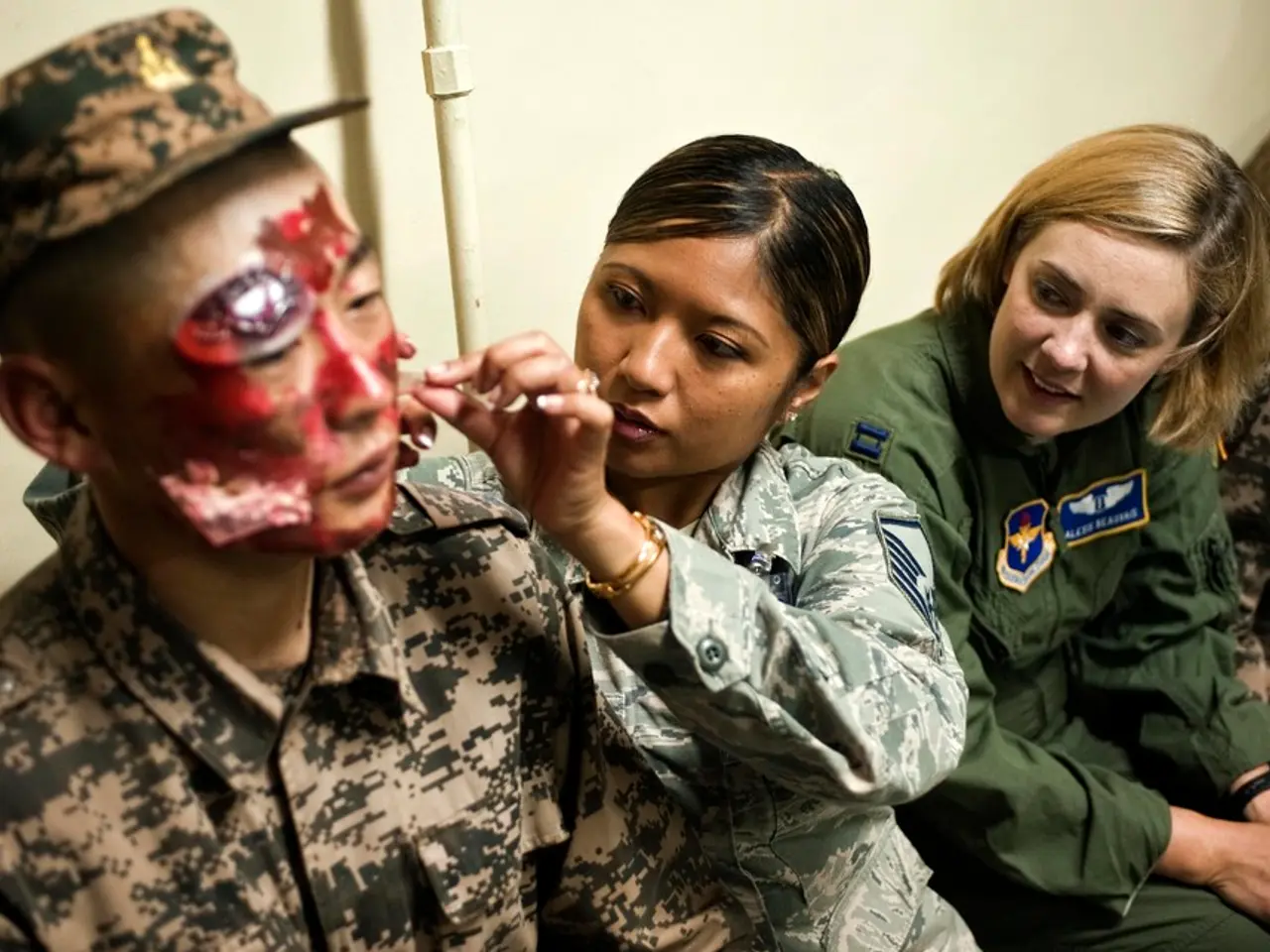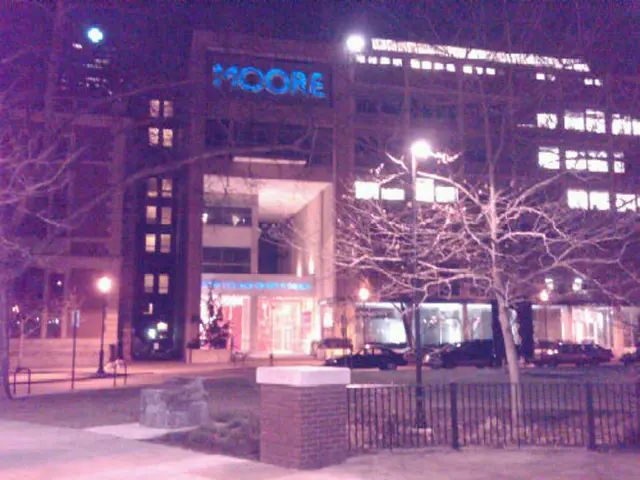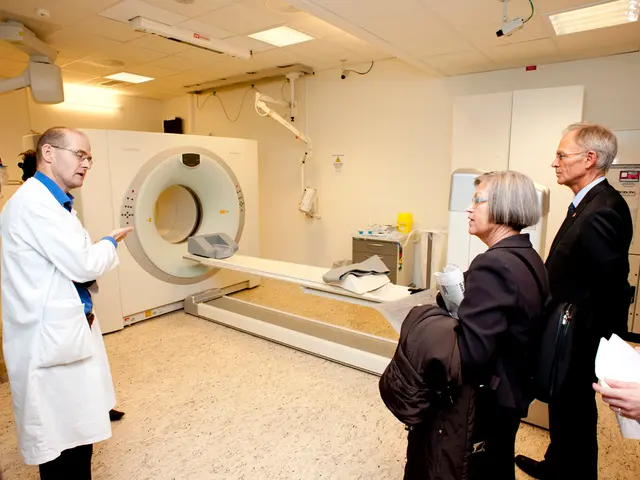Navigating the Discomfort of Hidradenitis Suppurativa
In the ongoing battle against Hidradenitis Suppurativa (HS), a chronic skin condition, new treatment options are emerging to help manage scars and alleviate symptoms.
For those suffering from the painful consequences of HS, medical intervention may include topical treatments, oral antibiotics, retinoid pills, hormonal medication, the diabetes drug metformin, and the TNF-alpha inhibitor adalimumab (Humira). However, there are additional treatment options for managing HS scars beyond the aforementioned methods.
Steroid (Corticosteroid) injections are one such option. These injections, administered directly into the scar tissue, help break up thickened collagen fibers and reduce scar size, particularly for raised or hypertrophic scars. This process takes several weeks and may not fully remove scars but can significantly improve their appearance [1].
Radiofrequency (RF) microneedling is another advanced technique that combines microneedling with radiofrequency energy to create microchannels in the skin and promote deeper collagen production and tissue remodeling. RF microneedling can improve scar texture, firmness, and overall skin rejuvenation with minimal downtime [4].
Biologic therapies, primarily used to treat the inflammation and active lesions in HS, can indirectly reduce scarring. Biologics like TNF-alpha inhibitors (e.g., adalimumab) and secukinumab effectively control disease activity, preventing new lesions and tunnels from forming [3].
Other options outside the initially listed treatments may be considered based on scar type and individual patient response. Dermal fillers might be used to fill atrophic (depressed) scars caused by HS, restoring volume and smoothing skin contour. Natural topical remedies, like lemon/lime juice or other agents, aim to lighten or soften the scar appearance but are generally less effective on extensive HS scars and not a substitute for procedural treatments [1].
Botox, primarily used for wrinkles, has limited off-label use in some scar modulation contexts, though this is not well studied for HS scars specifically [2].
Maintaining a moderate weight through diet and exercise, as well as quitting smoking, can slow the progression of HS and reduce the severity of symptoms. Early treatment can help reduce the number of lesions and minimize painful scar tissue.
In severe cases, a doctor may recommend procedural interventions to drain or remove lesions. The American Academy of Dermatology suggests medical cannabis and acupuncture as alternative pain relief options for HS. A dermatologist may refer a person with HS to a pain specialist.
Home management of HS pain may involve taking OTC pain relievers, using topical analgesics, applying warm compresses, wearing loose-fitting clothing, keeping the skin cool, maintaining good hygiene, and using antiseptics or antibacterial soaps. Once a scar forms, treatments cannot fully remove it, but they can minimize its size and appearance.
Early diagnosis and treatment are critical to managing HS and alleviating pain. Common triggers of HS flare-ups include stress, heat and perspiration, weight gain, changes in hormone levels, and menstruation. Managing stress, practicing good hygiene, quitting smoking, and maintaining a moderate weight through diet and exercise can help reduce the risk of HS flare-ups.
In summary, beyond the already mentioned options, steroid injections and RF microneedling stand out as additional effective treatments for HS scars. Controlling HS inflammation with biologics is also crucial to prevent new scarring. Other modalities like natural topical approaches or Botox are less established for HS scars but occasionally used adjunctively. A personalized treatment plan should be developed with a doctor to manage HS, as there is no cure for the condition.
References:
[1] British Journal of Dermatology. (2020). Management of Hidradenitis Suppurativa Scars. [Online] Available at: https://www.ncbi.nlm.nih.gov/pmc/articles/PMC7154050/
[2] Journal of Drugs in Dermatology. (2019). Botulinum Toxin A for Scar Modulation: A Review of the Literature. [Online] Available at: https://www.ncbi.nlm.nih.gov/pmc/articles/PMC6566874/
[3] Journal of the American Academy of Dermatology. (2019). Biologic Therapies for Hidradenitis Suppurativa: A Review. [Online] Available at: https://www.ncbi.nlm.nih.gov/pmc/articles/PMC6576384/
[4] Dermatologic Surgery. (2018). Radiofrequency Microneedling: A Review of the Literature. [Online] Available at: https://www.ncbi.nlm.nih.gov/pmc/articles/PMC6142535/
- In addition to traditional treatments for Hidradenitis Suppurativa (HS), management of scars can include steroid injections and RF microneedling, which help reduce scar size and improve appearance.
- Biologic therapies, primarily used for managing inflammation and active HS lesions, can also indirectly reduce scarring by controlling disease activity.
- Dermal fillers, natural topical remedies like lemon/lime juice, and Botox (though less established) are occasionally used to manage HS scars, but are generally less effective on extensive scars caused by HS.
- Mental health and stress management are crucial for HS patients, as managing stress, practicing good hygiene, quitting smoking, and maintaining a moderate weight through diet and exercise can help reduce the risk of HS flare-ups and manage the chronic symptoms associated with HS.




